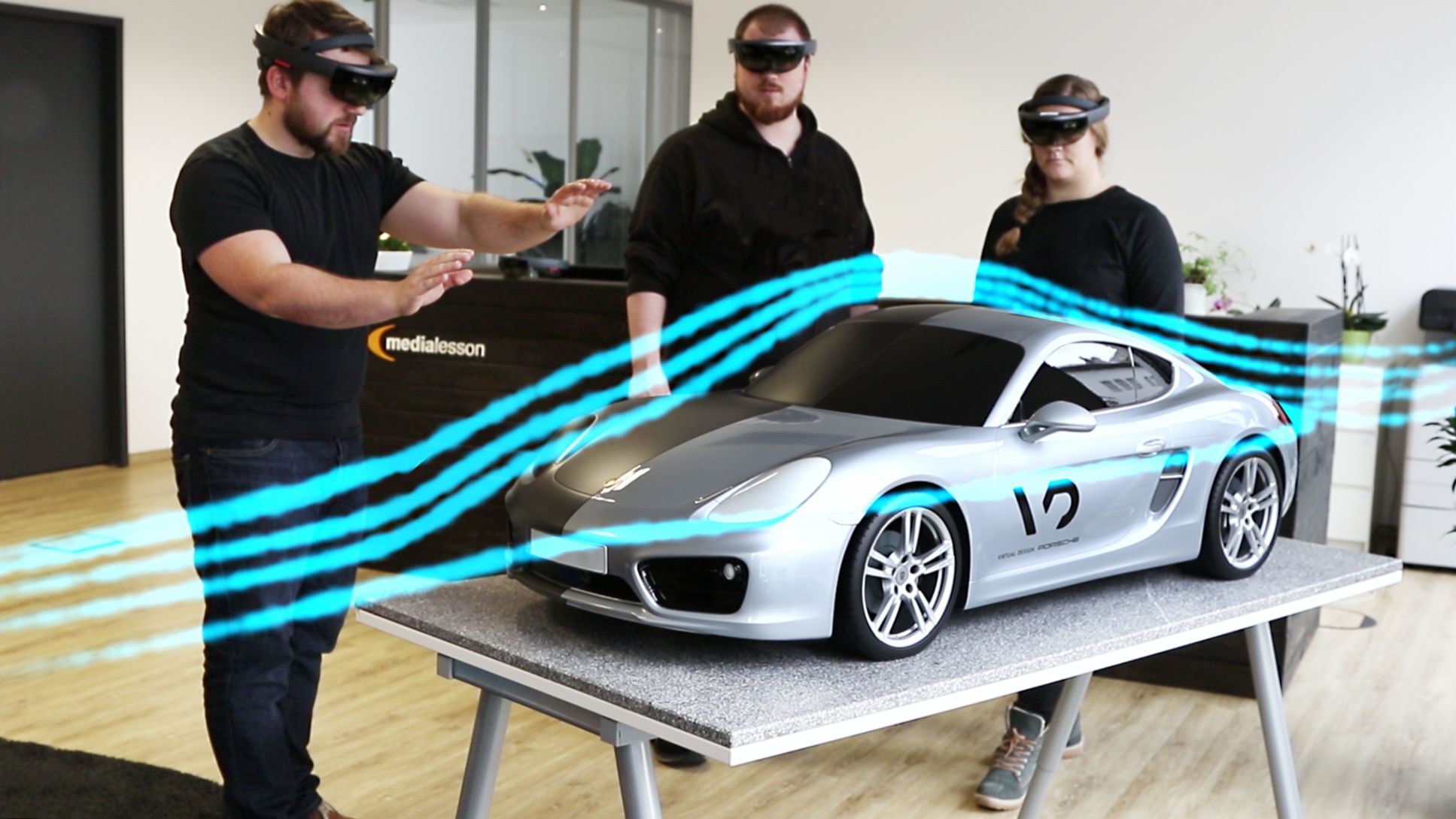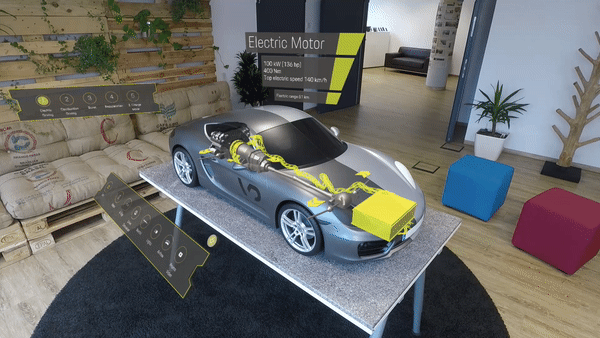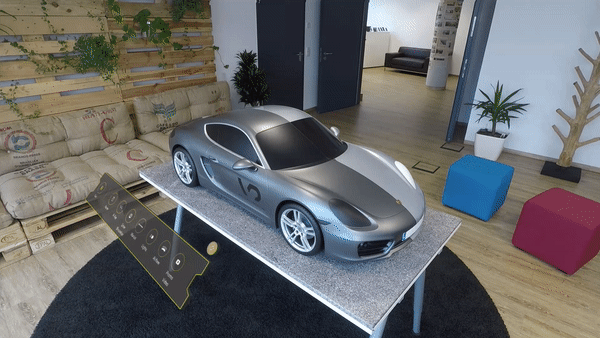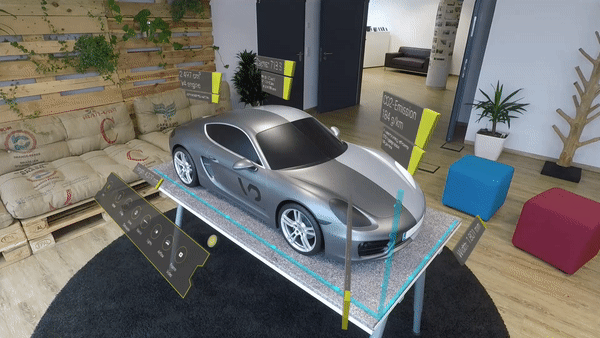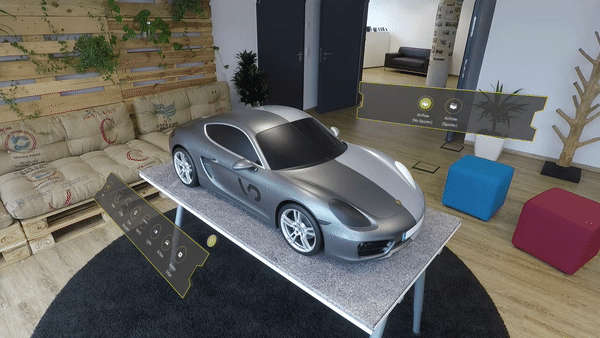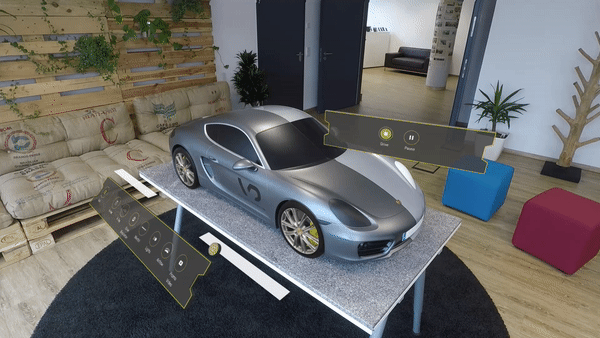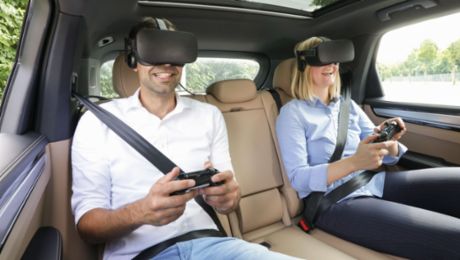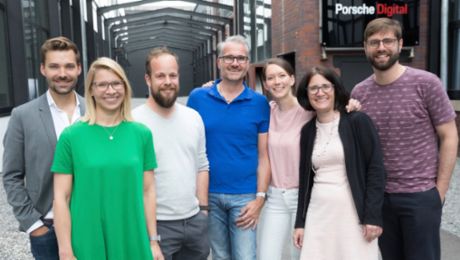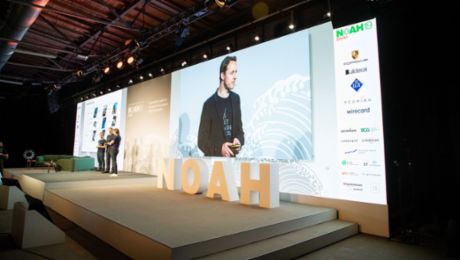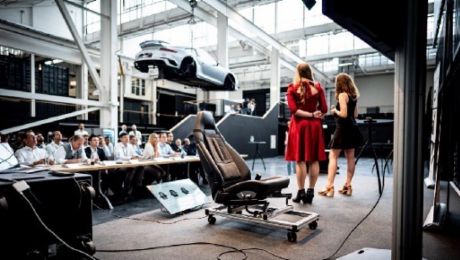We spoke to Pablo Kern at Meyle+Müller, Philipp Bauknecht at medialesson and Sebastian Reher at Porsche about this unique collaboration, its background and, of course, its results.
Mr Reher, what is Porsche’s "traditional" design process like and how have the general conditions changed over recent years?
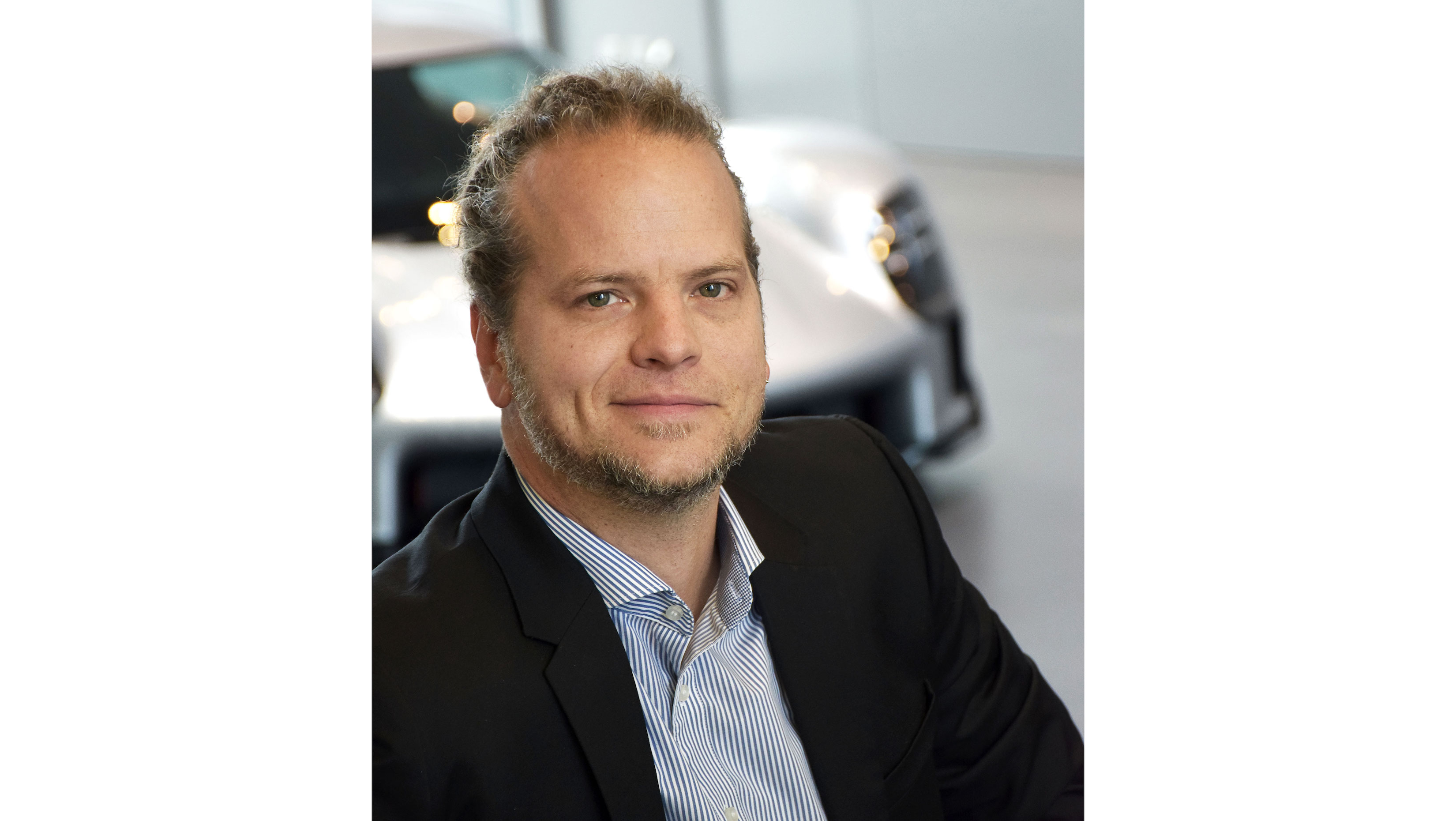
Sebastian Reher: New vehicle designs – both their exterior and interior – are still depicted through physical models at Porsche using manual labour and great attention to detail before being fine-tuned and made ready for series production. This iterative process that takes several months also entails a digital representation of the models. The design is further developed in parallel or alternation to the physical model or in the digital world. Digital data is transferred to the physical model or returned into the digital world using modern milling and scanning technology. In recent years, Porsche has significantly expanded its product portfolio, and the number of derivatives and selectable options has steadily increased. In order to be able to continue to take into account the high quality standards, we began to virtually accompany the entire design process 15 years ago to increase decision-making security through visualisations that are as realistic as possible. This allows decisions to now be made purely on a virtual basis as long as there is no model (yet), which significantly increases the iteration speed, particularly in the early stage of design.
When did the need to redefine this process ultimately arise?
Reher: The design never comes to a standstill. Our products and processes aren’t the only things to have continuously developed, we also keep an eye on new technologies and methods alongside improving the quality of virtual representation. We identified the advantages of virtual reality early on and integrated this technology into our daily work with so-called “VR glasses”.
How did you come up with the idea of searching for a solution in mixed reality?
Reher: Following virtual reality one might suppose that augmented reality or the broader field of mixed reality would be the next logical step in technology. But the technology itself is not relevant to us. Our focus is always on how to further optimise our processes and how AR can help us in a case such as this. The idea was to complete the physical design models with virtual representations and to make technical parts that are hidden beneath the outer shell, such as the headlight interior, visible through overlay.
This allows missing components to be added virtually to the physical model with all the freedom that virtual representation has to offer, something that would otherwise involve a great deal of cost and effort. Geometric variants of different colour schemes can therefore be depicted just as easily as complex animations – such as our adaptive aerodynamics. Additional metadata such as vehicle dimensions can therefore be superimposed with precision.
Mr Bauknecht, what kinds of companies typically approach you and what are the most common requirements?
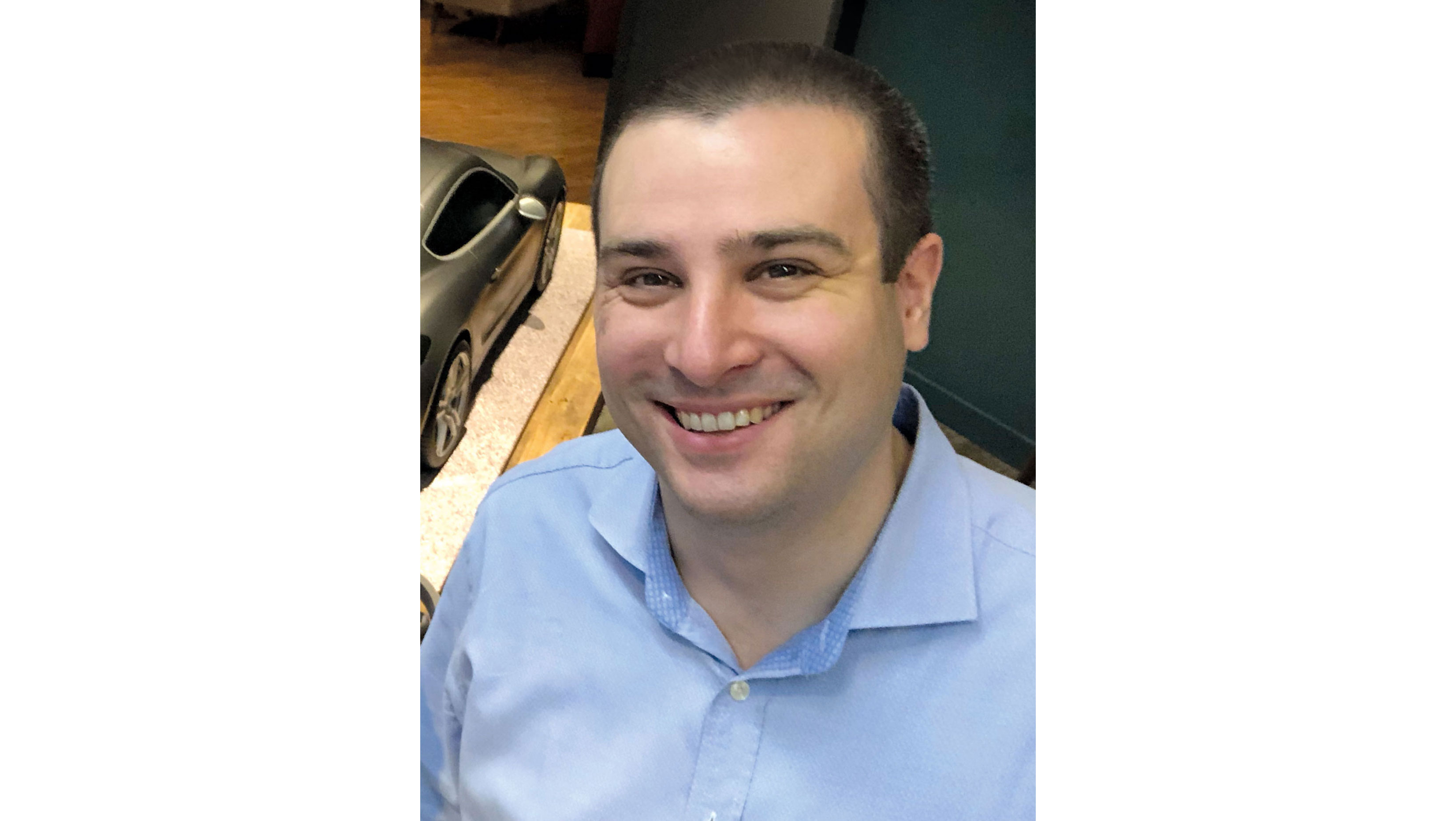
Philipp Bauknecht: Our customers include companies and institutions of various sizes and industries, from global players such as Porsche, Microsoft and Telekom to medium-sized and highly specialised world market leaders such as Balluff. Our mission is to support our customers as a true partner with the digital transformation of their business models, products and processes through consultation, strategy, design, development, training and operation with cutting-edge technologies. There are multiple possible fields of application for mixed reality. In the automotive industry it can also be relevant to marketing and sales applications, in addition to the visualisation of 3D data for design and development. There is also tremendous potential for increasing efficiency in applying mixed reality to quality assurance in production and training service employees. Mixed reality is not only relevant to large-scale companies, but also offers medium-sized enterprises to stand out on the market.
How has the technology developed over recent years and what can we expect from its application in the short and medium term?
Bauknecht: The term “mixed reality” was coined by Microsoft when it launched the first AR glasses in 2015 with the first generation of the HoloLens, initially as a developer version. The platform has since undergone rapid development. The introduction of Magic Leap in 2018 saw the emergence of an exciting competitor on the market, and that same year, Microsoft introduced the long-awaited second generation of its glasses. The improvement and balance between an ever- increasing viewable area, improved comfort for longer use and increased display performance play a crucial role in the technology’s further development. The second generation of the HoloLens, which was introduced this year, has already significantly surpassed the first HoloLens in all these aspects while offering vastly more intuitive use through hand and eye tracking and a built-in artificial intelligence chip, for instance, in order to identify and classify objects.
Why did Meyle+Müller opt for medialesson as its IT partner?
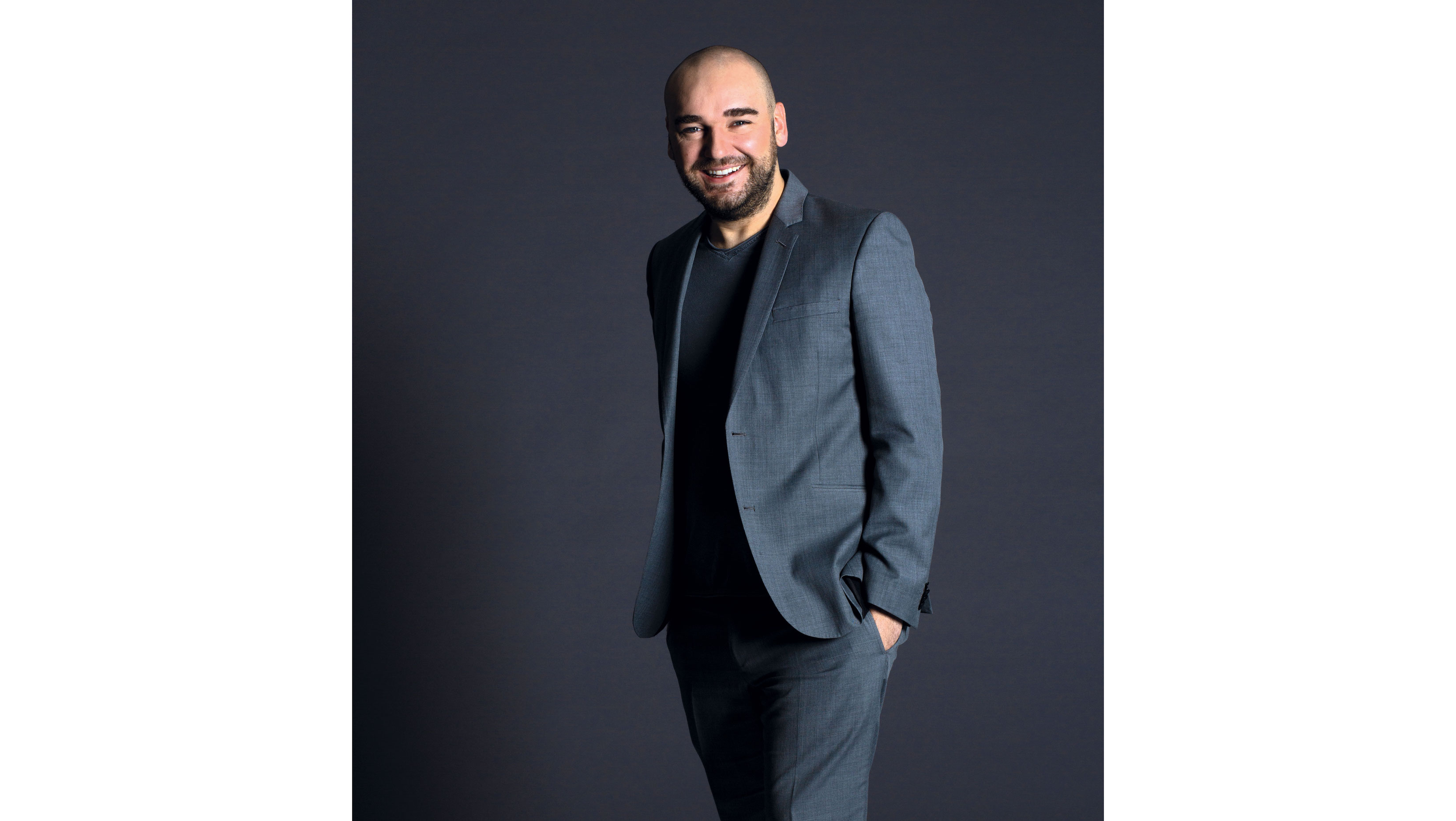
Pablo Kern: Initially the main reason was that we complement one another perfectly in terms of expertise. Our partnership has greatly benefited from the combination of our skills. Together with medialesson we have not only been able to cover the entire range of 3D data and CGI (Computer Generated Imagery), but also provide complex software development while meeting the high standards of the entire project. One of the most important aspects of our collaboration was the shared vision of all those involved, something which motivated us to achieve our goal every single day.
Mr Kern, what exactly was Meyle+Müller’s task in this project?
Kern: The close-knit and highly productive contact with one another was there from the start, and so we were already incorporated during the creation of the vision and while designing the contents of the project together with medialesson and Porsche. Throughout the whole time we were always involved in the constant coordination in order to continually align requirements and advantages with the concept in an agile manner. Key account management and feasibility within the budget and timeframe were also crucial tasks throughout the entire project. But our most important contribution was certainly our ability to work with data that is kept under conditions of extreme secrecy. Thanks to our long-term experience with CGI in the automotive and manufacturing industry, this was certainly our absolute core competence in this project.
What were the main challenges?
Kern: Technology can only be as successful as its user friendliness. The latest innovations won’t do much good if users won’t accept it in practice. In this project this specifically means that projected objects must be transferred onto the model in a precise and photorealistic manner, as decisions can only be made through perfect results during the design process. At the same time, a minimal data volume must be ensured despite these high technology requirements and Porsche’s extreme high-resolution 3D models.
Bauknecht: I see things in a similar way – for us the greatest challenge during this project lay in the combination of real, physical objects and digital, holographic contents. The headlights of a car were digitally applied to a clay model, for instance. Tremendous precision is required to allow the holograms to be positioned in a stable manner.
Mr. Kern, was the Porsche project able to benefit from your media production know-how?
Kern: Absolutely! We have been working with a large workforce in the automotive sector for several decades, and so we are used to handling complex data of this sort. Furthermore, our aim has always been to be “best in class”. I think that it was only through this experience and our motivation that we were able to get such an innovative and unique project on the road with our partners medialesson and Porsche.
A hackathon took place in November 2018 as part of this collaboration. What were you expecting from this event and what was the outcome?
Bauknecht: We regularly organise hackathons at medialesson in order to generate new approaches and ideas together with our customers. We see the open exchange of skills, ideas and contacts in the developer community and with other companies as a great benefit to all those involved. The hackathon that was organised together with Porsche, Microsoft and Meyle+Müller, was no exception. In addition to exciting ideas and impressive prototypes, the event led to lively discussions and allowed many new connections to be established.
Kern: The hackathon was a long-held dream that we pursued in this setup. Our aim was to push the limits of feasibility and to find inspiration and viable approaches. The draw of prizes, a cool topic and a great location ultimately meant we received more applications from participants than we had hoped for. We were also joined by several experts from our customers’ companies who got involved and incorporated their ideas. For the hosts, which officially also included Microsoft and Porsche alongside medialesson and Meyle, this platform and meeting was unique and highly beneficial to all those involved, including in terms of potential recruiting, inspiration and marketing.
Reher: As mentioned before, technology itself is not the solution, it also depends on the fields of application and especially the people to find new, thrilling ways in which to use this technology. That’s why we thought a hackathon in a creative environment might be a good opportunity to continue working on this thrilling topic.
Please tell us more about the composition of the individual teams and the collaboration during the event.
Kern: Despite or perhaps because of the major differences between the three companies, especially in terms of their fundamental focus, size and experience in this area, it resulted in a perfect complement for the entire project. This created a harmonic team that worked towards one goal in unison and on equal footing. This dynamic was also demonstrated during the hackathon, where vastly different personalities came together.
Bauknecht: Most of the teams spontaneously formed on site and came from diverse backgrounds. We had several international participants, software developers, designers and representatives from various companies, all of whom worked across companies in an interdisciplinary manner.
Reher: Fortunately there was a very open and cooperative atmosphere, so one of our colleagues spontaneously decided to join a team and help them work on their concept. Several exciting functions based on mixed reality had been developed by the end of the projects, such as the 3D voice memos or x-ray vision.
Which developments are you particularly proud of?
Kern: I am especially proud of the overall quality and the realistic visualisation of the use cases. Each one of them stands out on its own and provides added value that would not have been attainable without this technology.
Bauknecht: As software developers, the simple and marker-free recognition of the vehicles through artificial intelligence and the subsequent precise positioning of the holograms is the greatest achievement, and simultaneously the basis for all specialist use cases.
In which areas of your design process do you think this new technology will bring the most advantages in the future, Mr Reher?
Reher: I expect the main advantages to occur in closing the gap between the real and the virtual world. Virtually supplementing information where it is needed and displaying it in the correct context will allow us to further upgrade our design models in the future. A meeting will therefore no longer have to switch back and forth between a model and a presentation screen, instead it will allow all relevant information to be displayed in one place.
What experiences have you personally gained from this project?
Reher: The excellent cooperation with Meyle+Müller and medialesson gave us plenty of new insights into a relatively new technology, so I look forward to further exciting projects in the future.
Kern: The fact that curiosity, team spirit and patience always pay off. Advancing into innovative areas while simply tackling them with bravery and seeing things through to the end results in new chances and opportunities that ultimately push everything and change your actions. Porsche made this stage and opportunity become a possibility for us in the first place, while also becoming an equal partner and player, which we certainly could not have anticipated beforehand.
Bauknecht: Innovations are best developed through open and inspiring cooperation with different partners. We found Porsche to be a challenging, agile and partner-like customer. Our long-established partnership with Meyle+Müller not only allowed us to achieve excellence in software development, but also to develop a holistic solution with high-quality 3D data.
Pablo Kern
Pablo Kern has been with Meyle+Müller since 2008 and has been an integral part of the management team as General Manager since 2012. In addition to his operative sales responsibilities, he also visits many customers and events, as he also deals with the acquisition of new customers and support of numerous clients in Germany and abroad alongside his management tasks.
Philipp Bauknecht
Philipp Bauknecht is the founder and CEO of medialesson GmbH. This role sees him help customers with the design, architecture, development and operation of modern and easy-to-use applications on his platform together with his team. He has also been a Microsoft Regional Director since 2017.
Sebastian Reher
Sebastian Reher is Head of VR Presentations in Design at Porsche AG, where he is particularly active in the Emerging Technologies department. Following his degree in media computer science he worked as a Visualisation Specialist at RTT AG in Munich before joining Porsche in 2011.
Info
Text first published in The Produktkulturmagazin, issue Q2 2019
